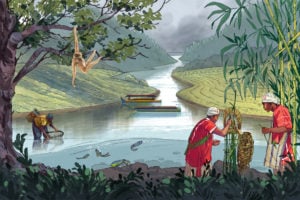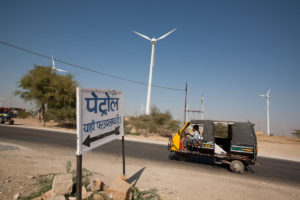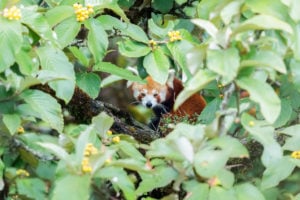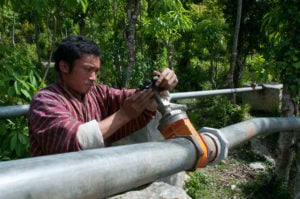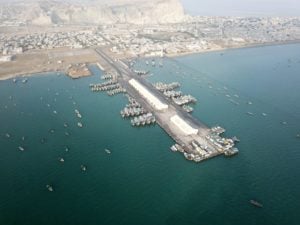The beginning of 2024 for Nepal was marked by important talks to export hydropower produced electricity. In the first week of January, Nepal signed a 25-year trade deal with India. One key agreement was to sell 10,000 MW of electricity to India in the next 10 years. And in the third week of February, Kulman Ghising, the managing director of the Nepal Electricity Authority led a delegation to Bangladesh to discuss tariffs for electricity trade. While the two countries have not, as yet, succeeded in agreeing on the price, both the countries have long pursued electricity trade with each other.
Back home in Nepal, however, Deep Narayan Shah – an aquatic biodiversity researcher who teaches at Tribhuvan University’s environmental science department – worried how a major expansion of hydropower would affect fish. In 2021, Shah worked as part of a team of researchers for the Norwegian consulting company SINTEF to assess the impact of hydropower on aquatic biodiversity in Nepal. This was the latest in a series of reports drawing on international best practices and comparing them with ground realities in the country.
At the time the study was conducted Nepal had a generation capacity of 1,200 MW from 86 operational hydropower projects. Of these, the study focussed on 50. By the end of 2023, 142 hydro projects with a generation capacity of 2,603 MW were in operation, and another 244 projects with a generation capacity of 8,757 MW were under construction, according to the Electricity Development Department. None of these projects have engaged with the alarming issues highlighted by the SINTEF report.
Dry riverbeds, fish ladders that don’t work
The biggest impact of hydropower dams, the report noted, was in blocking water flow, stating: “None of the 50 HPPs [Hydropower projects] conducted any studies of the Environmental Flows (EFlows) to determine the flow rate to be released to ensure that fish and other aquatic life can survive in the river.” Without such a study, most of the projects simply said that they released 10% water flow, as mandated by the country’s hydropower policy. During the inspection by the SINTEF team, though, they saw that even the 10% was not maintained in the dry season (roughly December to May). During the last three to four months of this period, many hydropower projects released no water at all, with the riverbed drying out for more than 10 kilometres downstream.
The devastation this can cause cannot be overstated, but even when there is water flow there are problems. For a number of fish species, migration up and down a river is necessary for breeding, and hydropower projects block their movement. Under Nepal’s laws, such projects have to build fish ladders – structures that will help the fish navigate around the construction. But Shah and his team found that only 12 of the 50 hydropower projects in the study have fish ladders for upstream fish migration. “However, none of the fish ladders were designed for the specific migratory fish in the river, and only one has been monitored to assess if fish are successfully passing through the fish ladder,” the report found.
Findings fall on deaf ears
As hydropower projects continue to be built in Nepal, the lessons from the report are not being implemented, says Shah. Part of the reason is that neither the World Bank – which commissioned the report – or the electricity department in Nepal whose work it audited, have made the report public. SINTEF put the report on its website, and in an email reply to The Third Pole said it is not an “official report” of the World Bank. Nonetheless, SINTEF said that they and the World Bank had sent the report to authorities in Nepal and had a virtual discussion.
Officials at the Department of Electricity Development denied any knowledge of the report, although Kamal Panthi, an engineer at the environment section of the department, said that only limited monitoring of aquatic impact was conducted. “We approve reports prepared by the developers and fully rely on them,” he said, “we don’t have the means and mechanism to monitor hydropower projects across the country, nor do we validate environmental assessment reports through field visits.” He added that the finance ministry slashed the budget and “has allocated just seven lakhs [USD 5,000] for monitoring [for the July 16, 2023-July 15, 2024 fiscal year]. How would you monitor projects nationwide with such a minimal budget?”
Developers are already stressed as there are too many rules and regulations… so who would have time to think about fish?Prateek Pradhan, vice president of Butwal Power Company
Laws to preserve aquatic biodiversity precede those for other forms of wildlife in Nepal. The country passed its Aquatic Animals Protection Act in 1960, 13 years before the passage of the National Parks and Wildlife Conservation Act. Rakesh Yadav, an aquatic biodiversity expert who took part in the study, said, “Everybody sees energy in the flowing water in our rivers but hardly realises that water is just a part of a bigger ecosystem.” He added, “If the government could monitor and implement existing policies, that would improve things.”
Energy producers have a separate point of view. Prateek Pradhan, vice president of Butwal Power Company – one of Nepal’s pioneering private sector hydropower companies – told The Third Pole, “Developers are already stressed as there are too many rules and regulations, electricity authorities close their eyes as they need more energy to meet growing energy demand and to sell it to India whereas the locals have so many other issues that they would like to have the funds to be invested [like roads, schools, hospitals] so who would have time to think about fish?”
Narrow approach destroys biodiversity
Nepal sees hydropower projects as critical to its own energy needs as well as a way to earn revenue from abroad. Speaking on the condition of anonymity, a source at the Nepal Electricity Authority said that, until “a couple of years ago, we used to have power cuts of over 12 hours every day… The country still imports one-third of electricity from India during winter as run-of-the-river projects generate less than half of installed capacity then.” He asked rhetorically, “Who would want to talk about fish when each drop of water could be counted as money?”
This type of thinking has had a corrosive impact on Nepal’s aquatic biodiversity. According to the International Union for Conservation of Nature (IUCN), out of 230 freshwater fish species in Nepal, 21 are on the red list, with three critically endangered, one endangered, four vulnerable, and 13 near threatened. Several reports, including one from the Asian Development Bank released in 2018, have highlighted hydropower projects as a key reason that the fish population is declining across the country, and dams are one of the significant problems. Atle Harby, a senior research scientist at SINTEF who led the hydropower study, highlighted a first step that Nepal could take. “The Ministry of Energy, Water Resources and Irrigation could start by preparing a master plan for hydropower development in the country, seeking a balance in power generation with electricity demand, power sources, and environmental and societal needs”.


